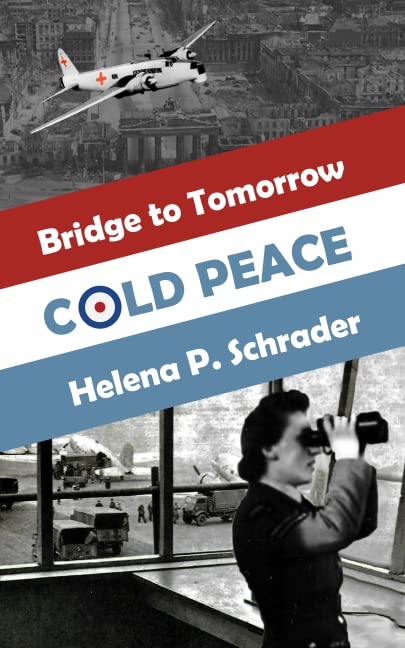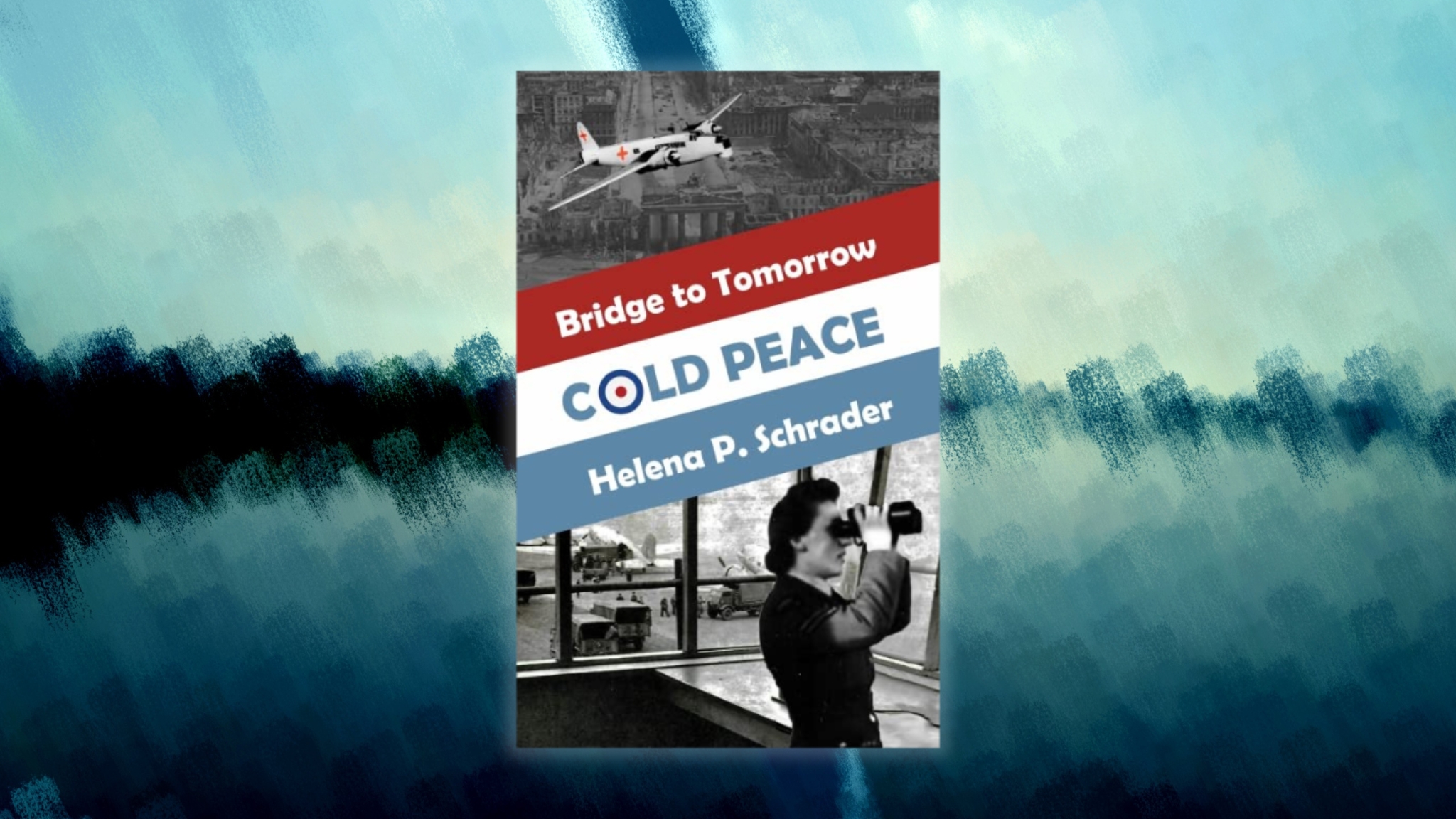Cold Peace by Helena P. Schrader
Berlin, 1948. A war-ravaged city lies in ruins as the victorious Allied powers guard their separate occupation zones and work toward reinstituting Berlin’s infrastructure and economy. But when the Soviet Union brazenly imposes a blockade upon the Western sectors, it will precipitate the heroic and herculean effort known as the Berlin Airlift — the focus of historian and award-winning author Helena P. Schrader’s ambitious new trilogy, Bridge to Tomorrow.
With the first installment, Cold Peace, Schrader focuses on events in Berlin from the winter of 1947 through June 1948 as experienced through a diverse cross-section of both victor and vanquished. The first third of this agreeably hefty novel is spent introducing these enigmatic men and women who either come to Berlin or are caught in it.
RAF Wing Commander Robin Priestman, a British flying ace, arrives in Germany as the new station commander at RAF Gatow airfield on the outskirts of Berlin in January 1948. Accompanied by his independent-minded pilot wife, Emily, they make the rounds of diplomatic functions and meet their American, British, French and Soviet counterparts. Soon, Soviet bully tactics in British air space reach warlike levels.
Dynamic Cast of Characters
Schrader moves between characters with fluid breaks that keep the story moving. And what characters!
Charlotte Graefin (Countess) Walmsdorf, a German war widow and journalist, who sleeps inside her apartment kitchen to stay warm. David Goldman, a German Canadian Jew who returns to Berlin to possess his Uncle Otto’s home, only to find a former Nazi occupying it. Kathleen Hart, single mother and RAF widow, an air traffic controller and member of the Women’s Auxiliary Air Force, working at RAF Gatow and looking for love, again. Schrader’s deftly written backstories help keep a multitude of characters and subplots straight.
Berlin, “seething beneath the crust of its wounds,” is a major character by itself. Schrader gets into the dark innards of it where “underneath, like a festering wound, poisonous forces are at work.” The seedy underworld of the black market, kidnapping and prostitution, along with the “institutionalized theft” of the Soviet Union, touches everyone in one fashion or another. But hope remains, as Charlotte’s cousin Chrisitan muses:
“Berlin, ravaged as it was, still had a spark of life in it. It still had an indefinable cheeky quality that defied defeat — not on the surface, perhaps, but behind the grim facades and underneath the ruins.”
Magnificent Story, Compelling History
The climax of the novel should be no surprise or spoiler — history shows the Soviet Union imposed a blockade on the Western Sectors of Berlin on June 24, effectively cutting off “2.2 million civilians from food, fuel, electricity, and all other necessities of life.” The Priestmans, Goldman, Hart and Walmsdorf will face this crisis from different sides and soon learn that allies are now enemies and enemies, allies.
Cold Peace is a magnificently conceived story on a grand scale (who writes trilogies anymore?) with dynamic characters, detailed yet evocative prose, and compelling history. Readers will eagerly await Schrader’s next installment, Cold War.
 About Helena P. Schrader:
About Helena P. Schrader:
Dr. Helena P. Schrader is the author of six critically acclaimed non-fiction history books and nineteen historical novels, eleven of which have earned one or more literary awards. She holds a PhD in history from the University of Hamburg, which she earned with a ground-breaking biography of a leader of the German Resistance to Hitler and served as an American diplomat in Europe and Africa.
Helena’s chief areas of expertise are Aviation, the Second World War, Ancient Sparta, and the Crusader States.






